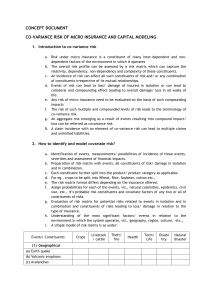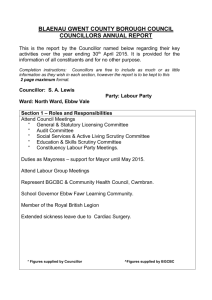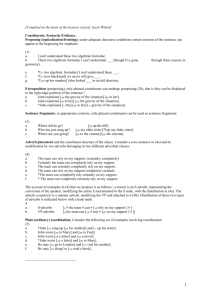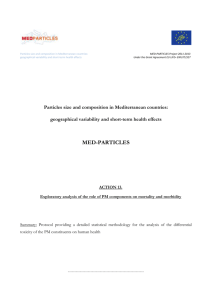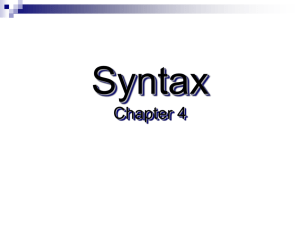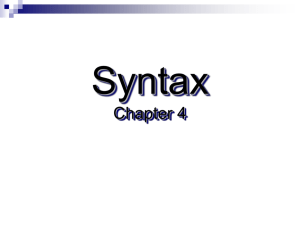An immediate constituent
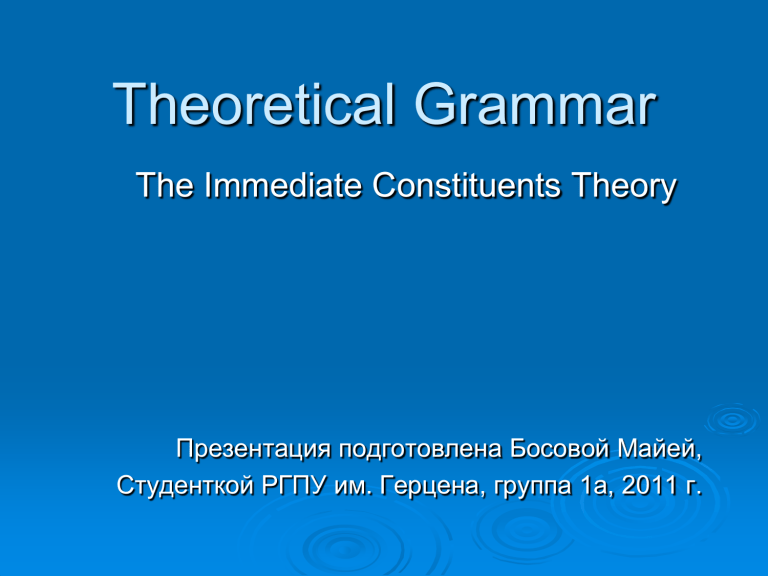
Theoretical Grammar
The Immediate Constituents Theory
Презентация подготовлена Босовой Майей,
Студенткой РГПУ им. Герцена, группа 1а, 2011 г.
Methods of grammatical analysis
Immediate Constituent Analysis (IC analysis) was introduced by Leonard
Bloomfield (1933)
Combinations of units are usually structured into hierarchical sets of binary constructions e.g.: a black dress in severe style :
a black dress
in severe style
The fundamental aim of immediate constituents analysis is to segment a set of lexical units into two maximally independent sequences immediate constituents .
The further segmentation of immediate constituents results in ultimate constituents :
“a” ,”black” ,“dress” , “ in” , “severe” , “style” .
This method is based on the binary principle , i.e. each stage of the procedure involves two components the unite immediately breaks into.
The analysis is completed when we arrive at constituents incapable of further division, i.e. morphemes
Definitions
An immediate constituent - is a word or a group of words that functions as a single unit within a hierarchical structure.
The ultimate constituents - are the smallest meaningful units which any given construction can be broken down to, consisting of, a morpheme at the morphological level and a word at the syntactic level.
The linguistics procedure which divides sentences into their component parts or constituents in this way is known as constituent analysis.
The segmentation of the sentence up into its immediate constituents by using binary cuttings units its ultimate constituents are obtained is an important approach to the realization of the nature of language called Immediate
Constituent Analysis (IC Analysis ).
Morphology
The concept of immediate constituents (IC's) is important both in morphology and syntax.
The morphemic structure of the word can be analyzed in a linear way :
W= {[Pr +(R+L)]+Gr}
The method of IC s is based on the fact that a word is characterized by morphological divisibility.
The main opposition dealt with is the opposition of stem and affix.
Ungentlemanly
A diagram presenting the four cuts described looks as follows:
1.
un - / gentlemanly
2. un- / gentleman / ly
3. un- / gentle / man / - ly
4. un- / gentl / e / - man / - ly un- + {[{gent- + -le) + -man] + -ly}
As we break the word we obtain at any level only two IC’s, one of which is the stem of the given word.
The main requirement is : the analysis must reveal patterns observed in other words of the same language
This analysis on the word-formation level shows:
The morphemic constituents of the word
the structural pattern on which it is built.
Morphemic analysis under the method of
Ultimate Constituents may be carried out on the basis of two principles: the so-called root-principle and affix principle.
Phrase
A phrase - is a combination of 2 or more notional words connected by means of subordination: cold weather
Prof. Barkhudarov: a phrase - is a combination of 2 or more notional words, connected by means of subordination, coordination and predicative relation if it cannot function as a sentence: mother and father
Syntax
There were two grammar theories which sought to teach how a sentence is generated. These are the linear grammar and immediate constituent grammar (IC grammar, phrase grammar).
The linear theory taught that a sentence is generated on a very simple model consisting of three elements :S+V+O.
IC analysis
Sentences are not just linear sequences of elements, but are made up of ‘layers’ of immediate constituents, each lower level constituent being part of a higher level constituent.
IC analysis is relevant for any level.
Syntax
Σ
Poor John ran away
VP
VP – V + Adv ran away
NP – Adj + N
Poor John
Poor John ran away
Σ {NP (Adj + N) + VP (V + Adv)}
the "I С-derivation tree"
{The + [small + lady]} + {[listened + (to + me)] + attentively}.
Tree structures express a fundamental insight of syntactic analysis. That insight is that sentences do not simply consist of strings of lexical categories. Rather, within any sentence, words are grouped together to form phrases, which then combine with each other to form still larger phrases and so on.
Immediate constituent analysis has its limitations. It is not possible to analyze such structures, for example, some sentences that are structurally similar but semantically they are different.
1. {Robert + [is easy + to flatter]}.
2. {Robert + [is eager + to flatter]}.
When the same string of words can be associated with more than one tree structure, it is said to be structurally ambiguous.
“I bring new pens and pencil”
I + (bring + {new + [pens and pencil]})
I + (bring + {[new pens] + [and pencil]}
Constituency tests
Substitution
I don't know the man who is sleeping in the car.
I don't know him who is sleeping in the car.
(ungrammatical)
I don't know him.
Movement
He is going to attend another language course to improve his English.
To improve his English, he is going to attend another course
The question test
What did you do yesterday? - Worked on my new project. vs.
What did you do yesterday? - Worked on
References
Блох М. Я.
Теоретическая грамматика английского языка: Учебник. Для студентов филол. фак. ун-тов и фак. англ. яз. педвузов. — М.: Высш. школа, 1983.
Юлдашев Н.Theoretical English grammar. Lectures
Раевская Н. Н. Теоретическая грамматика современного английского языка. Издательское объединение «Вища школа». Головное издательство, 1976.
http://englishschool12.ru/ http://www.ranez.ru/

